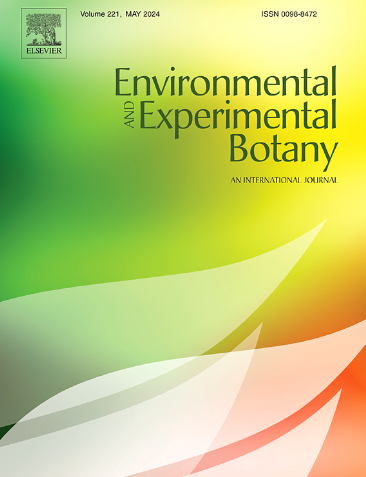Molecular mechanisms of wheat acclimation to soil degradation: Insights into salt stress, heavy metal contamination, and nutrient deficiency
IF 4.7
2区 生物学
Q2 ENVIRONMENTAL SCIENCES
引用次数: 0
Abstract
Wheat is the world’s second-largest crop, feeding over 30 % of the global population. To meet increasing food demand, substantial amounts of fertilizers have been used to boost yields. However, excessive fertilization has led to severe soil degradation, including salinization, heavy metal contamination, and nutrient depletion, which negatively impact wheat yield and quality over time. This review highlights recent advances in understanding wheat acclimation thresholds and the molecular mechanisms involved in responding to adverse soil environments. Key molecular responses include: (1) enhanced antioxidant enzyme activity and the accumulation of protective compounds that mitigate reactive oxygen species and stabilize cellular structures; (2) activation of transporter and ion channel-related genes to promote Na+ efflux and reduce salt toxicity; (3) coordinated action of chelation and transport genes that bind, compartmentalize, and expel toxic metal ions, thereby reducing heavy metal toxicity; and (4) upregulation of root architecture and high-affinity nutrient transporter genes to improve nutrient acquisition under deficiency stress. Acclimation thresholds to salinity, heavy metals, and nutrient limitations vary among wheat varieties due to underlying genetic differences. Understanding plant responses to combined soil stresses and leveraging these traits through advanced breeding strategies will be key to developing resilient varieties for sustainable agriculture.
小麦适应土壤退化的分子机制:盐胁迫、重金属污染和养分缺乏的见解
小麦是世界第二大作物,养活了全球30% %以上的人口。为了满足日益增长的粮食需求,人们使用了大量化肥来提高产量。然而,过量施肥导致土壤严重退化,包括盐碱化、重金属污染和养分枯竭,随着时间的推移对小麦产量和品质产生负面影响。本文综述了小麦驯化阈值及其在逆境土壤环境响应中的分子机制的最新进展。关键的分子反应包括:(1)增强抗氧化酶活性和保护性化合物的积累,减轻活性氧和稳定细胞结构;(2)激活转运体和离子通道相关基因,促进Na+外排,降低盐毒性;(3)螯合和运输基因协同作用,结合、区隔和排出有毒金属离子,从而降低重金属毒性;(4)通过上调根构型和高亲和性的营养转运基因,改善营养缺乏胁迫下的养分获取。由于潜在的遗传差异,小麦品种对盐度、重金属和养分限制的适应阈值各不相同。了解植物对土壤综合胁迫的反应,并通过先进的育种策略利用这些性状,将是开发可持续农业抗灾品种的关键。
本文章由计算机程序翻译,如有差异,请以英文原文为准。
求助全文
约1分钟内获得全文
求助全文
来源期刊

Environmental and Experimental Botany
环境科学-环境科学
CiteScore
9.30
自引率
5.30%
发文量
342
审稿时长
26 days
期刊介绍:
Environmental and Experimental Botany (EEB) publishes research papers on the physical, chemical, biological, molecular mechanisms and processes involved in the responses of plants to their environment.
In addition to research papers, the journal includes review articles. Submission is in agreement with the Editors-in-Chief.
The Journal also publishes special issues which are built by invited guest editors and are related to the main themes of EEB.
The areas covered by the Journal include:
(1) Responses of plants to heavy metals and pollutants
(2) Plant/water interactions (salinity, drought, flooding)
(3) Responses of plants to radiations ranging from UV-B to infrared
(4) Plant/atmosphere relations (ozone, CO2 , temperature)
(5) Global change impacts on plant ecophysiology
(6) Biotic interactions involving environmental factors.
 求助内容:
求助内容: 应助结果提醒方式:
应助结果提醒方式:


